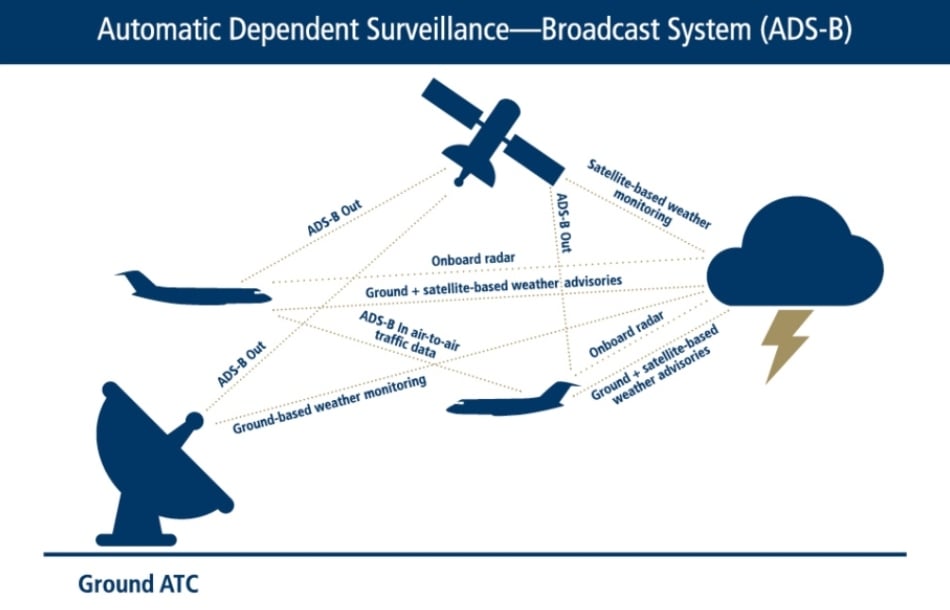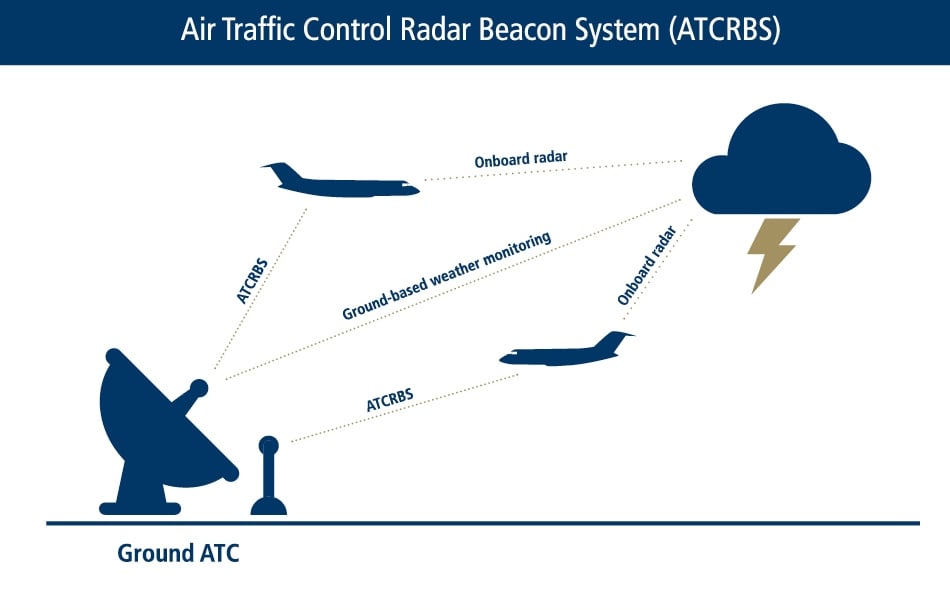In 2010, the FAA mandated that an Automatic Dependent Surveillance—Broadcast Out (ADS-B Out) system be installed on aircraft flying in most US airspace, with a deadline of January 1, 2020. The shift to a completely new system has incited a flurry of activity and comment in the aviation community, and aircraft modification shops are beginning to book up as the deadline looms.
Now, more than ever, it’s important to get up to speed on what this change means for your aircraft and take action before time runs out. Here are answers to some common questions about the switch:
What is ADS-B?
The ADS-B system uses satellites to transmit air traffic control (ATC) data as an alternative to ground-based radar-installations.
Having ADS-B Out installed will help ATC locate an aircraft more quickly using the satellite-based system. However, going beyond the requirements to install both the “Out” and “In” pieces of the ADS-B system unlocks the full advantages of this new technology for an aircraft and its operators. Essentially, ADS-B In allows pilots to see what ATC sees with almost no lag, including aeronautical and weather products from TIS-B and FIS-B. To benefit from this information, you’ll need to install a special display. While not a negligible expense, access to this expanded functionality is arguably well worth the price. Plus, the expense of an “In” installation can be bundled with the mandatory “Out” installation at modification shops, which should result in cost savings for you.
Here’s a diagram to help you understand how information is transmitted with a ground radar-based system versus a satellite-based system:
|
Old System Air Traffic Control Radar Beacon System (ATCRBS)
The transponders on aircraft are pinged by radar installations on the ground with a small amount of lag to get positioning data. To get information about air-to-air traffic, aircraft must query ATC through other channels (usually radio). For evolving hazardous weather conditions, pilots rely on onboard radar and query ATC for additional advisories or alerts in evolving weather situations. In very remote areas (like the Gulf of Mexico and parts of Alaska) ATCRBS is unavailable. |
New System Automatic Dependent Surveillance—Broadcast (ADS-B) System  The transponders on aircraft ping satellites, which quickly transmit positioning data to ATC and all ADS-B In equipped aircraft. With the addition of ADS-B In, aircraft can see air-to-air traffic instantly on an onboard display without querying ATC and will automatically receive aeronautical and weather products to supplement onboard radar. ADS-B Monitoring is available even in remote areas not served by ATCRBS. |
As you can see, the amount of relevant information pilots can access through ADS-B In is truly amazing.
What Can I Expect from the New System?
Proponents of the shift to ADS-B are citing the potential for quicker flights and less time spent on runways as policies necessitated by radar-reliant ATC will be relaxed and adapted to the faster system with better coverage—ADS-B.
As ATC processes become more efficient, pilots and passengers of private aircraft should expect fuel savings resulting from more direct flights. The shift to ADS-B is one update to your aircraft that may pay for itself over time.
Aircraft opting to install ADS-B In will also receive the full benefit of on-demand weather and aeronautical products, and any other advisories that may be relevant to their position. Essentially, private aircraft will benefit from an additional dimension of safety and visibility that commercial airlines are already using with great success.
Where Can I Get the ADS-B Updates Done Before the Deadline?
For ADS-B modifications, consider a shop with a proven track record of providing quality modifications. Since you’re dealing with a crucial system that affects both the safety and regulatory compliance of your aircraft, a trusted service provider is the only way to go. Global Jet Capital recommends StandardAero, which we recently named a preferred partner for ADS-B upgrades. With locations in Augusta, Georgia, Springfield, Illinois, and Houston, Texas, StandardAero offers convenience for most US-based customers. Plus, Global Jet Capital clients will receive special discounted pricing on ADS-B projects, with additional savings if the work is bundled with other projects or maintenance.
As the deadline approaches, StandardAero’s MRO sites and schedules are filling up quickly. Global Jet clients will receive priority scheduling—but it’s still advisable to make a plan sooner, rather than later. Get in touch with us at +1.844.436.8200 for more information on ADS-B or help arranging your upgrade appointment.



